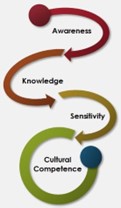An example of a client who requires emergency admission to a mental hospital is one who has been diagnosed with:
Client with bipolar disorder who has been pacing up and down the sidewalk.
Client who had a suicide attempt one year ago.
Client who is paranoid and reports frequent hallucinations.
Client with post-traumatic stress disorder who hit his son with a bat.
The Correct Answer is D
This client’s behavior indicates that they may pose a danger to themselves or others and may require immediate intervention to ensure their safety and the safety of those around them.
The other clients (a, b, c) may also have mental health needs, but their situations do not necessarily indicate the need for emergency admission to a mental hospital. It is important for healthcare providers to assess each client’s individual needs and to provide appropriate care and support.
Nursing Test Bank
Naxlex Comprehensive Predictor Exams
Related Questions
Correct Answer is D
Explanation
In this situation, the nurse is recognizing that the woman is distressed and is showing empathy and understanding by offering her a private space to talk. This allows the woman to express herself freely without feeling judged or embarrassed in front of others. It also shows the nurse's respect for the woman's privacy and her cultural beliefs, which may include the need for modesty and privacy during emotional situations.
Option A is not culturally competent because it dismisses the woman's emotional state and implies that her behavior is abnormal.
Option B assumes that medication is the solution to the woman's emotional distress and does not address her cultural needs.
Option C is not culturally competent because it disregards the woman's feelings and emotions and implies that her reaction is inappropriate.
Overall, cultural competence is about being respectful and sensitive to the beliefs, values, and customs of individuals and communities from diverse backgrounds, and providing care that is tailored to their unique needs and preferences.

Correct Answer is ["4"]
Explanation
The prescribed daily dosage is 150 mg.
The tablets available are 37.5 mg each.
To find out how many tablets to administer, we divide the prescribed dosage by the tablet strength.
In this case, 150 mg ÷ 37.5 mg/tablet = 4 tablets.
Therefore, the nurse should administer 4 tablets to meet the prescribed dosage of 150 mg.
Whether you are a student looking to ace your exams or a practicing nurse seeking to enhance your expertise , our nursing education contents will empower you with the confidence and competence to make a difference in the lives of patients and become a respected leader in the healthcare field.
Visit Naxlex, invest in your future and unlock endless possibilities with our unparalleled nursing education contents today
Report Wrong Answer on the Current Question
Do you disagree with the answer? If yes, what is your expected answer? Explain.
Kindly be descriptive with the issue you are facing.
